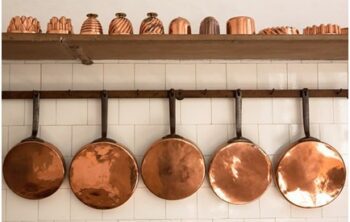Clay pots have been an integral part of human history, serving as vessels for cooking, storage, and artistic expression for thousands of years. The process of making clay pots is a fascinating journey that involves both age-old techniques and modern innovations. In this article, we will delve into the intricate steps of crafting clay pots, from the selection of raw materials to the final firing.

Step 1: Selection of Raw Materials
The first and crucial step in making clay pots is selecting the right type of clay. Clays vary in their composition, plasticity, and firing characteristics. Potters often blend different clays to achieve the desired properties in the final product. Common types of clay used for pottery include earthenware, stoneware, and porcelain.
Step 2: Wedging
Once the clay is chosen, it needs to be prepared through a process called wedging. Wedging involves kneading and compressing the clay to eliminate air pockets and ensure a uniform consistency. This process also improves the plasticity of the clay, making it easier to work with.
Step 3: Shaping
Shaping the clay is where the artistic journey truly begins. Potters can use various techniques to shape the clay, such as hand-building, wheel-throwing, or molding.
- Hand-building: This technique involves using the hands to manipulate the clay into the desired form. Coiling, pinching, and slab construction are common hand-building methods.
- Wheel-throwing: In this traditional technique, a potter uses a potter’s wheel to shape the clay. The wheel spins while the potter shapes the clay using their hands and tools.
- Molding: Molding involves pressing the clay into a pre-made mold to create consistent shapes and sizes. This method is often used for mass production.
Step 4: Drying
After shaping, the formed clay pots need to dry slowly and evenly to prevent cracking or warping. The drying process can take several days, depending on the size and thickness of the pots. During this phase, the pots become “greenware,” which is the term for unfired pottery.
Step 5: Trimming and Finishing
Once the greenware is dry, potters often refine the shape and add intricate details through trimming. Trimming involves using tools to remove excess clay, create smooth edges, and add decorative elements.
Step 6: Firing
Firing is a critical step that transforms the dried clay pots into durable, functional items. There are two main types of firing:
- Bisque Firing: This is the first firing, which takes place at a relatively low temperature (around 1,800°F or 980°C). It drives out any remaining moisture and makes the clay hard enough for glazing.
- Glaze Firing: After bisque firing, the pots are coated with glaze—a mixture of minerals that, when fired, forms a glass-like surface. Glazes not only add color and texture but also make the pots waterproof. Glaze firing occurs at a higher temperature, usually between 2,100°F and 2,400°F (1,150°C to 1,315°C), depending on the type of clay and glaze used.
Step 7: Cooling and Unloading
After the glaze firing, the kiln is turned off, and the pots are allowed to cool gradually. This slow cooling helps prevent thermal shock, which could cause the pots to crack. Once the kiln reaches room temperature, the pots are carefully unloaded, revealing the final results of the pottery-making process.
Step 8: Inspection and Finishing Touches
The unloaded pots undergo a thorough inspection to ensure quality. Any defects or imperfections are addressed, and additional finishing touches may be applied, such as polishing, painting, or adding decorative elements.
Conclusion
The art of crafting clay pots is a mesmerizing blend of ancient traditions and modern techniques. From selecting the right type of clay to molding, firing, and adding intricate glazes, every step requires skill, creativity, and patience. The resulting clay pots are not only functional vessels but also tangible pieces of art that reflect the hands that shaped them and the history they carry. Whether they are utilitarian cooking pots or exquisite decorative pieces, clay pots continue to captivate and inspire us with their timeless beauty and versatility.


